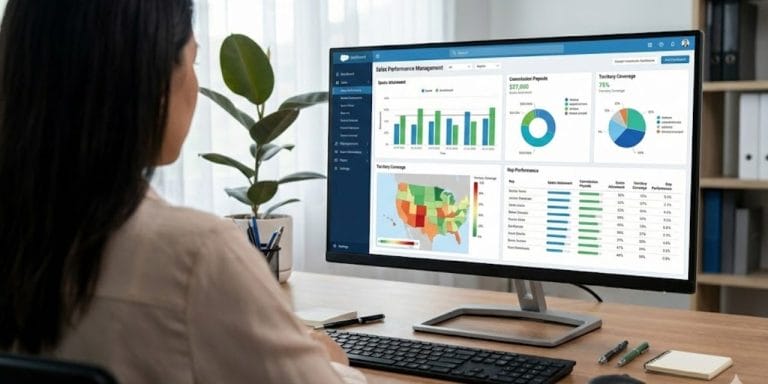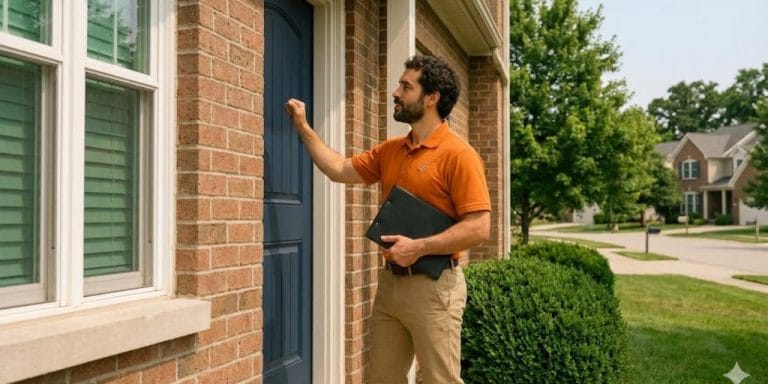Canvassers are a very underrated and undervalued component of your sales process.
These people are your foot soldiers, knocking doors, getting told to go “kick rocks”, having doors slammed in their face, and most importantly setting appointments to make sure your closers (sales reps) have appointments to go to.
They put up with a lot and don’t always get much in return in the way of appreciation. Show canvassers that you understand how hard they work, and how difficult their job is, by learning the best times to canvass to maximize contact rates. Closers, if anyone, should be thankful for what they do or they’d be handling the entire sale from start to finish.
Sure they make mistakes and may not always be the best at qualifying leads, but you have to remember it’s an entry-level sales position.
An appointment is like gold to a canvasser, so you need to have a process to ensure a successful hand-off from them to the sales rep. The second part to the hand-off equation is to ensure a high show rate, meaning the prospect actually shows up to the appointment. If your show rate is lower than expected you’ll need to know how to identify and fix the issue.
A higher show rate means more “at-bats” for your closers, and more at-bats leads to more sales, even if their closing percentage remains the same.
If a sales rep closes 10 deals and has 40 total appointments show, they have a 25% closing percentage.
Even if their closing percentage remains the same, (which theoretically shouldn’t with more appointments) they’ll still close more deals. If the same sales rep with a 25% closing percentage now has 60 appointments show, they’ll close 15 deals.
Four Strategies to Improve Show Rates
Ensuring a high show rate starts with the canvasser, yet most don’t know what they can do to help improve this number, or what they’re doing wrong. We’ll focus on four key concepts:
- Knowing When the Appointment Should Be Set
- Locking Down”the Appointment
- Offering Valuable Information
- Having a 3rd Party Verify the Appointment
1. Should the Appointment Have Been Set?
An appointment shouldn’t be set just because the consumer says yes.
Let’s face it, some consumers will schedule an appointment with a canvasser just to get them to go away. Sometimes they’ll say yes to the appointment without truly understanding what it is your company is offering. There’s a variety of reasons that a potential customer will set an appointment without ever having intentions of showing up for it.
Canvassers should be trained to understand the difference in a customer who’s actually interested and someone who’s not likely to make their scheduled time.
It’s just as important for customers to ask questions as it is for canvassers. Very few sales pitches give every single piece of information needed to make a decision. If the prospect isn’t asking questions during the conversation, there’s a slim chance they have a real interest in your service.
The appointment shouldn’t be set in this situation, especially if you don’t have a 3rd party verifying it.
Your scheduler or office administrator should go over the information that the canvasser provided when the appointment was set. If the information doesn’t match up, this should be a red flag that you have a problem.
It’s important for the person verifying the information to ask a couple additional detailed qualifying questions. This is done to confirm their interest in your company.
Along those same lines, the canvasser should have thoroughly qualified the prospect. They should be gathering this information and turning it in with the appointment. If some of the qualifying questions are blank, there’s a good possibility this isn’t a quality lead.
Good sales professionals always get answers to their questions, and a lack of qualifying information reduces the likelihood a prospect is truly interested, or that they’ll show up.
2. Locking Down the Appointment
At the Door
It’s vital for canvassers to pay attention to their own body language and know the mistakes that may cost themselves the appointment. It’s even more critical for them to pay attention to thebody language and vocal cues of the consumer. They have to be able to recognize someone who’s just saying yes to get them to leave, or an individual who doesn’t know how to say no.
These people aren’t real leads and do nothing but waste your time. Either they won’t show up to the appointment or they won’t take it seriously because they were never truly interested in the first place. If one of these customers magically makes a purchase, they’ll likely be the first to churn.
Confirmation
“Locking down” appointments should be required for canvassers. A lockdown is a technique used to gain buy-in and ensure the client shows up. Once a prospect has agreed to an appointment, you want to reconfirm what they agreed to multiple times in a subtle, yet direct manner.
If you ask the homeowner if they’re going to be at the agreed upon appointment three times in a row, chances are they’re just going to get pissed off.
You should also ask about any potential conflicts that could possibly arise, or one they already have but didn’t think about.
One final thing, be sure to throw in a value prop.
You want to leave the customer excited, wanting to know more. This is not the value prop or hook that’s used during the initial pitch; typically it’s something they’ll get out of showing up to the appointment.
Here’s a very brief lockdown outline to use once the customer has agreed to an appointment:
- 1st Confirmation: Confirm day and time and gather a couple other piece of qualifying information just to break up the conversation.
- 2nd Confirmation: Confirm day and time and ask the customer for any anticipated conflicts that could prevent them from showing up.
- 3rd Confirmation: Confirm day and time.
3. Offer Something of Value
Regardless of whether or not you even speak to the prospect, always have something to offer. Having a few stats or an infographic showing the value and benefit of your service that you can send by email is a great way to give something without being asked. The principle of reciprocity says that people are more likely to return the favor to someone who’s done something for them already.
When someone doesn’t answer, leave a voicemail letting them know you’re going to bring a better version of what they’re interested in and give it to them for the same price. Obviously you may need approval for some of these things, but they’re ideas and examples you can pull from. The point is to find a way to offer and give something to the prospect that lets them know you’re thinking of them.
4. Use a 3rd Party to Verify the Appointment
A 3rd party can be anyone in your company like a scheduler or an office administrator. Most of the time it’s not the sales rep who is going to the appointment.
The goal of verifying the appointment is to make sure the information that the canvasser provided is accurate, have an additional person in your organization gauge their interest level and make sure they’re going to show up.
The person or team that will be verifying appointment details need to be trained to determine buying potential. Just like canvassers, they need to be able to determine whether or not the appointment should have been set.
Making sure the information provided is accurate is a great step to help improve show rates. While doing this, ask a few additional qualifying questions as follow ups to the initial question. You’ll get more information for the sales rep to use during the presentation.
If the potential customer is very short, doesn’t want to answer the questions or gets frustrated at any point, this could be a sign the appointment shouldn’t have been set. There’s endless possibilities, but the main takeaway is to verify their information and gauge interest.
Key Takeaways
Ultimately, canvassers need to do more at the door, and companies need to do more prior to the appointment. Both roles need to be customer focused and value driven. There needs to be a greater importance placed on giving more.
This doesn’t mean you need to start discounting your services and investing financially in a customer who hasn’t made a purchase yet, but you should be placing an emphasis on your sales team giving more in terms of perceived value. As the saying goes, “perception is reality.”
Want more? Check out the other installments in this series below:
The Lead Handoff in Canvassing: Part 1 – The Handoff Process from Canvasser to Sales Rep
Next Up: The Lead Handoff in Canvassing: Part 3 will cover how to identify why your show rate is low and the steps you can take to correct it.
_____
SPOTIO is the #1 sales engagement and territory management app to increase your revenue, maximize your profitability, and increase your team’s productivity in just 2 weeks.
Want to see a product demonstration? Click here to see how SPOTIO can take your sales game to the next level.




